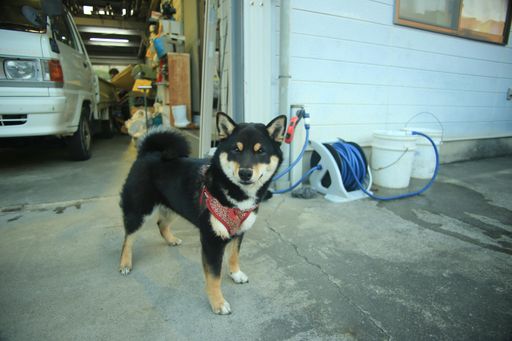Many pet owners reach a point where life has to change. If you’re a dog owner, it’s fair to say that your furry friend is undoubtedly and firmly part of those plans. You may be starting a new job in a new part of the country, taking an extended break or long-distance holiday, or even approaching retirement. It’s no wonder that you want your dog to join you in an exciting new chapter in your life.
A change of scenery can obviously unlock many personal benefits and excitement for us as pet owners. Still, the prospect of, say, international travel, can be particularly daunting for our four-legged companions. They may not always adjust to a new environment straight away, so we have to be considerate of the potential stress and anxiety that may cause them.
Perhaps you’re considering an extended stay for your family during the winter or summer break in a Miami holiday home, retiring to a modern property on the Spanish coast, or venturing to Australia for a two-month holiday. Whatever your next adventure, we recommend some key steps to ensure your dog is best able to adjust to a new environment (even if temporary), a potentially unsettling travel experience, and the challenges of adjusting to new surroundings.
This guide will help you navigate the process of preparing your dog for a significant life-changing move or extended travel, ensuring a smooth transition for both you and your beloved friend.
Understanding Canine Travel Anxiety
Before getting into the nitty gritty, it’s vital to recognize the signs of travel anxiety in dogs. Signs your dog may be getting anxious or stressed include:
- Excessive panting or drooling
- Restlessness or inability to settle
- Whining or barking more than usual
- Trembling or shaking
- Attempting to escape or hide
- Loss of appetite
- Vomiting or diarrhea (in severe cases)
These symptoms are just for guidance only. We always recommend checking a reputable medical provider like VCA Animal Hospitals for advice.
Remember that every dog is different and anxiety can manifest in specific ways for each dog. If you have a firm grasp of your dog’s normal behavior, you will be more likely to identify when they are behaving ‘out of character’ and spot signs of stress more easily.
Preparing Your Dog for the Big Move
1. Start Early
The key to reducing travel anxiety in your pets is to start preparing well in advance of your trip. The key is to try and get your dog comfortable with the idea of traveling.
Consider introducing them to their travel crate or carrier in gradual spells. Place treats, toys, or their favorite blanket inside to reinforce the idea that it’s safe and positive.
Months in advance (ideally), take short car rides to destinations like a park or a friend’s house to get them comfortable with being in a vehicle, and that it’s a completely safe experience. Over time, make these trips slightly longer to build your dog’s tolerance for longer journeys.
2. Create a Comfort Zone
Dogs feel more secure when they’re surrounded by familiar objects, scents, and people. As you gradually pack up your belongings, keep your dog’s bed, toys and routine intact for as long as possible.
Consider using pheromone diffusers or sprays in areas where your dog spends the most time, which can invoke feelings of calmness. Alternatively, you may find that an anxiety wrap or shirt provides more security and reassurance for them.
3. Maintain Their Routines
Dogs get into a healthy routine and habits, and if you want to keep their anxiety at bay, consistency and regularity are key. Stick to your regular feeding and walking times so they know what to expect, and engage in regular playtime to provide mental stimulation and reinforce your bond.
You may also wish to consider introducing a subtle dietary change gradually before the move, to avoid any additional stress-related accidents during travel.
In the run-up to the move or trip, you may also find that giving your dog more exercise than usual will help them burn off excess energy and feel more tired. This will, in turn, help them to relax and feel more calm.
4. Health Check and Paperwork
Depending on your travel plans, it’s always wise to spend time getting their health checks, paperwork and documentation in order to avoid any unnecessary delays or pushback at the airport.
Schedule check-ups with your vet to discuss your travel plans and any necessary vaccinations or medication. Make sure you have all relevant health and travel documents well in advance, and always ensure your dog’s microchip details are up to date with the correct contact information.
What to Do Travel Day
When the big day arrives, you’ll no doubt feel like you have a million things to do at once. However, ensuring your dog’s safety and calmness should always be top of the list. Here are some strategies to help you:
1. Create a Safe Space
- Set up a quiet area in your home where your dog can retreat to if necessary, particularly if home movers will be coming and going.
- Fill this area with all of your dog’s favorite toys and bedding so it feels more normal and less stress-inducing.
2. Stick to the Routine
- Where possible, maintain your dog's regular feeding and walking schedule, allowing them plenty of time.
- Try to limit food intake before lengthy travel to prevent motion sickness, and try to get them to drink plenty of water.
3. Stay Calm and Positive
- Dogs are sensitive to our emotions. Maintain a calm and positive demeanor to reassure your pet.
- Try to avoid long and emotional goodbyes which can increase your dog’s sense of uncertainty and anxiety.
4. Comfort Items for the Journey
- Pack a "travel kit" with your dog's favorite toys, treats, and a piece of clothing with your scent.
- Bring a portable water bowl and bottled water for rest stops.
Settling In at Your New Abode
Once you’ve arrived at your destination, whether it’s temporary or permanent, it’s always wise to immediately help your dog adjust to their new surroundings.
Set up a familiar space with their bed, toys, water and food bowls. Take them for a quick walk at your usual preferred time before gradually introducing them to new areas of the neighborhood. You may wish to let them roam freely about the new home, which would suit more confident and curious dogs, but if they’re more shy and anxious, take a more considered approach. Make sure you provide plenty of reassurance and positive reinforcement so they know the new environment is safe and secure for them.
Is There Anything Else Which Can Help Ease Travel Anxiety?
Believe it or not, technology can play a significant role in managing your dog’s well-being during and after travel, particularly in a new environment. GPS trackers designed specifically for pets, like those offered by FitBark, can provide peace of mind and help you keep tabs on your dog’s location, mobility, anxiety and health levels.
GPS trackers can be useful when exploring new neighborhoods and surroundings, monitoring your dog’s activity, and ensuring their safety in case they become disoriented.
As you embark on your new adventure, consider equipping your dog with a FitBark GPS and health tracker. It's a small device that can make a big difference in your peace of mind and your dog's safety as you both adjust to your new surroundings. Contact FitBark to learn more about how our GPS trackers can help you keep your furry family member safe and sound, wherever your journeys may take you. Safe travels!



















